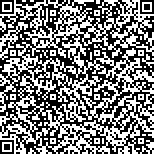下载中心
优秀审稿专家
优秀论文
相关链接
摘要

海洋表面温度(SST)是海洋学和气候学一个十分重要的物理因子,而卫星被动微波遥感能够穿透云层,实现全天候、大范围观测,因此利用中国FY-3C微波成像仪(MWRI)反演SST具有重要意义。FY-3C MWRI SST产品采用统计算法,首先利用MWRI降水和海冰产品剔除含降水和海冰的像元,之后选择时空间隔0.2 h和0.2°离海岸100 km以外的FY-3C MWRI观测亮温与浮标观测值进行匹配,再将全球在空间上分为4个纬度带,时间上分为12个月,并分升轨和降轨,分别建立浮标海温观测结果和MWRI亮温之间的统计关系,实现对SST的估算。将|估算海温-30年月平均海温|≥ 2.5 K的像元标识为51,发现这些像元基本分布在陆地边缘地区及大风速地区,剔除标识为51的像元后的精度验证结果表明:与全球浮标资料相比,FY-3C MWRI SST轨道产品升轨精度为-0.02±1.22 K,降轨精度为-0.15±1.28 K;与全球分析场日平均海温OISST相比,FY-3C MWRI SST日产品升轨精度为0.00±1.03 K,降轨精度为-0.09±1.08 K。微波辐射计的性能及其定位定标精度、上游卫星产品(降水检测和海冰检测)的精度、陆地的干扰及高风速对微波信号的影响均会造成SST估算误差,如何改进算法中风速大于12 m/s时的估算精度是下一步的工作重点。
Sea Surface Temperature (SST) is an important physical parameter in the field of marine and climate research. Passive microwave remote sensing has the advantage of completing all weather observations that disregard cloud interference, which has received increasing attention. FY-3C satellites, which carry a Microwave Radiometer Imager (MWRI) onboard, were successfully launched on December 23, 2013. Therefore, using the FY-3C MWRI to retrieve the SST is crucial.
The FY-3C MWRI SST uses statistical algorithms. First, MWRI precipitation and sea ice products were used to remove the precipitation and sea ice data. Second, the MWRI brightness temperature was matched with the buoy SST using a temporal window of 0.2 h and a spatial window of 0.2°. The matchup with land within 100 km was excluded. Third, the descending and ascending statistical relationship, which was divided into four latitudes and 12 months, between the buoy SST observation and MWRI bright temperature was established. In addition, 4×12×2 regression coefficients were obtained, and corresponding regression coefficients were used to estimate the SST. The daily SST was obtained using a 0.25°×0.25° equal latitude and longitude projections. The quality flag is set to 51 when the FY-3C MWRI SST minus a 30-year monthly mean SST is greater than 2.5 K, thereby indicating that these pixels were distributed on the edge of the land and high wind-speed region.
The quality validation of the FY-3C MWRI SST after excluding the pixels with a quality flag of 51 shows that the precision of the ascending orbit SST is -0.02±1.22 K and that of the descending orbit SST is -0.15±1.28 K in comparison with the global buoy data. The precision of the ascending daily SST is 0.00±1.03 K and that of the descending daily SST is -0.09±1.08 K in comparison with the global analysis field OISST. The ascending orbit is more accurate than the descending orbit considering the non-uniform heating of the ocean surface during the day (the descending orbit). The Kuroshio Current, Gulf Stream, Western Pacific Warm Pool, and La Nina are included in the monthly SST, thereby suggesting that this SST is applicable to climatology investigation.
The results of the quality validation of the FY-3C MWRI SST include the FY-3C quality control system. The SST precision is influenced by the performance, calibration, and positioning accuracy of the MWRI, precipitation and sea ice detection accuracy, land interference, and high wind speed. The improvement of the precision of the SST with a wind speed that is higher than 12 m/s is the emphasis of the next step. The buoy SST and global analysis field OISST cannot be considered a completely true value. Therefore, the triple collocation method will be utilized in the future to improve the comprehensive analysis of the error characteristics of the SST.

